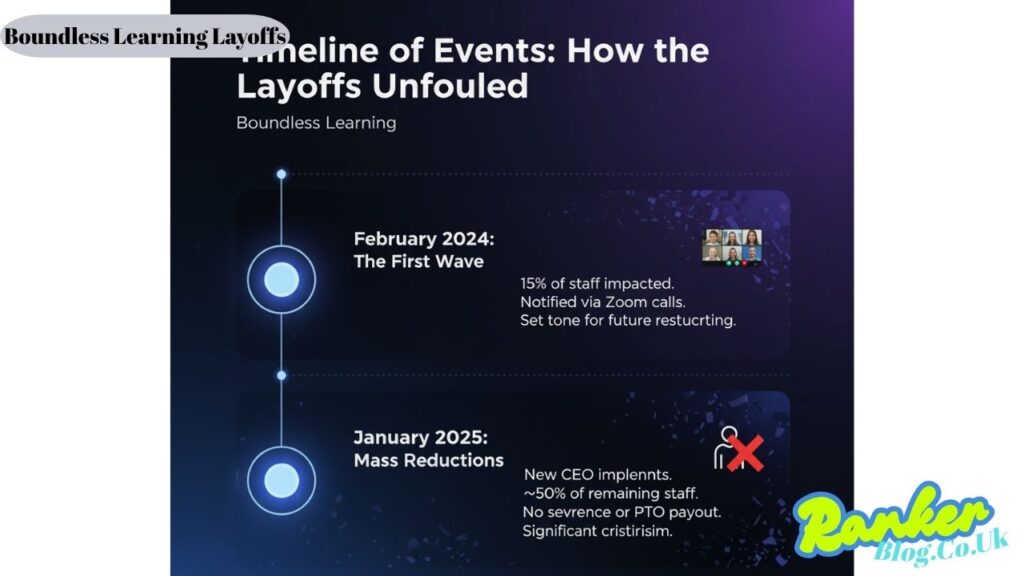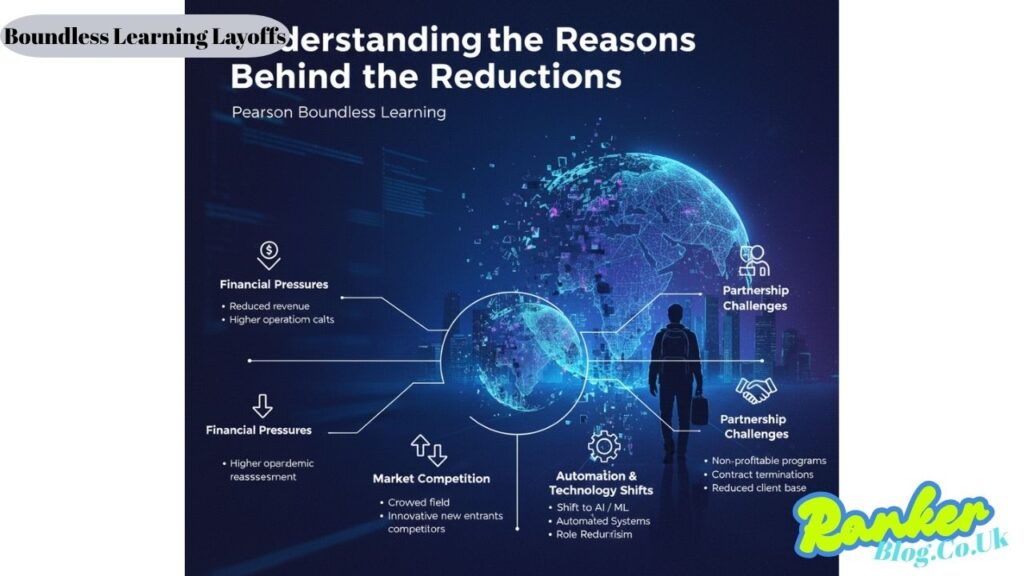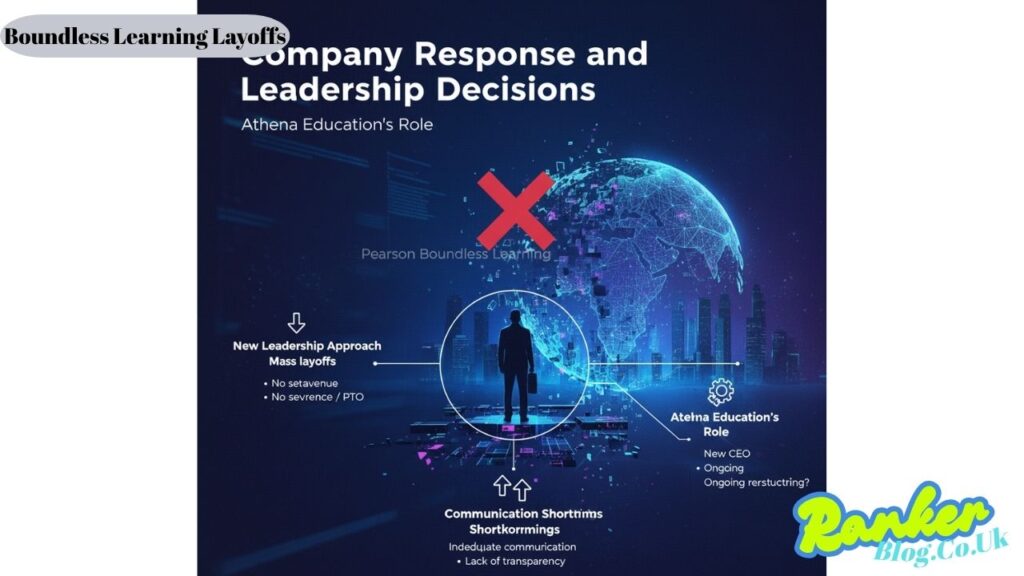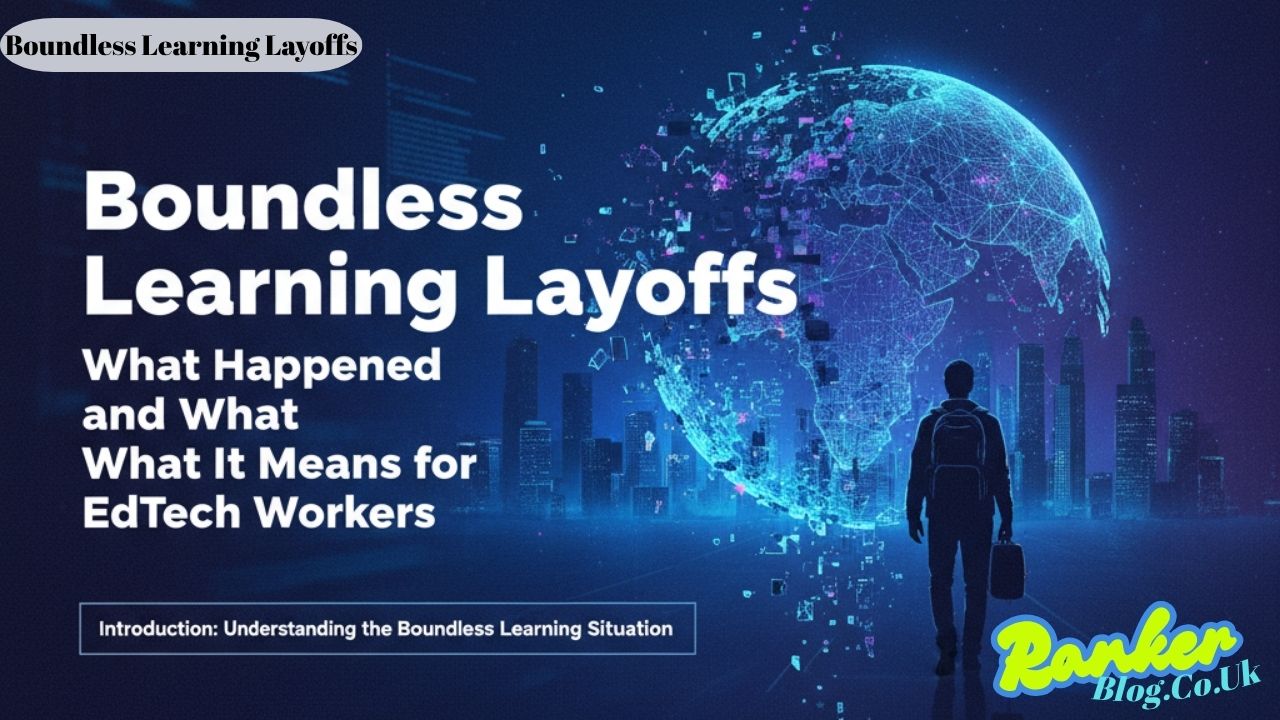Introduction: Understanding the Boundless Learning Situation
The education technology sector has witnessed significant upheaval in recent times, and the layoffs at Boundless Learning have become a focal point of concern for many professionals in the industry. This company, which traces its roots back to Pearson’s online learning division, has undergone substantial workforce reductions, leaving hundreds of employees searching for answers and new opportunities.
Boundless Learning originally emerged from what was known as Pearson Online Learning Services, or POLS, before being rebranded. The company’s mission centered on providing online educational services and support to institutions across North America. However, the transition from Pearson Boundless Learning to its current iteration under new management has been marked by controversy and difficult decisions.
The significance of these workforce reductions extends beyond just the affected individuals. The Boundless Learning layoffs represent a broader pattern within the EdTech industry, where companies are grappling with post-pandemic challenges, shifting market demands, and financial pressures that have forced difficult restructuring decisions.
Timeline of Events: How the Layoffs Unfolded

February 2024: The First Wave
The initial shock came in February 2024 when Boundless Learning announced its first round of workforce reductions. Approximately 15% of the company’s staff received news of their termination through Zoom calls, a method that would become emblematic of how the company handled these difficult conversations. This first wave set the tone for what would become an ongoing series of restructuring efforts.
January 2025: Mass Reductions
The situation intensified dramatically in January 2025 when a new CEO implemented mass layoffs that affected roughly half of the remaining staff. What made these Pearson Boundless Learning layoffs particularly controversial was the absence of severance packages and the lack of payout for accumulated paid time off. This approach drew significant criticism from both former employees and industry observers.
Ongoing Restructuring Into 2025
The company continues to navigate restructuring efforts as it attempts to find financial stability. Each phase of reductions has brought new concerns about the company’s future direction and its commitment to both remaining employees and the educational institutions it serves.
Scope and Scale: Who Was Affected
The Boundless Learning layoffs 2024 impacted hundreds of employees across virtually every department within the organization. The breadth of these reductions painted a picture of a company undergoing fundamental transformation rather than targeted trimming.
Departments Hit Hardest
Sales teams, software development groups, marketing divisions, and customer support staff all experienced significant personnel losses. The wide-ranging nature of these cuts suggested that the company was not simply adjusting to market conditions but potentially reimagining its entire operational structure.
The first wave in February resulted in approximately 15% workforce reduction, affecting dozens of professionals who had dedicated themselves to building the company’s reputation and service quality. The subsequent rounds in early 2025 were even more devastating, with up to 50% of remaining staff facing termination. This level of reduction raises questions about how the company plans to maintain service quality and meet its obligations to partner institutions.
How the Layoffs Were Conducted
One of the most contentious aspects of the Boundless Learning layoffs has been the manner in which they were executed. Employees reported receiving minimal notice before their termination, with many learning their fate through impersonal Zoom calls rather than face-to-face conversations or even individual phone calls.
The Zoom Call Method
The use of group video calls to announce layoffs became a particular point of criticism. Former employees shared experiences of attending what they thought were routine meetings, only to discover they were part of mass termination sessions. This approach, while perhaps efficient from a logistics standpoint, left many feeling devalued and disrespected after years of service.
Absence of Severance
Perhaps most troubling were reports that affected workers received no severance packages and were not compensated for their accrued paid time off. This departure from standard industry practices raised ethical concerns and potentially legal issues regarding the company’s obligations to its workforce. Many Boundless Learning reviews from former employees highlighted this issue as particularly problematic, noting that it left families in difficult financial situations with no buffer period to secure new employment.
Understanding the Reasons Behind the Reductions

Several factors converged to create the conditions that led to the layoffs at Pearson Boundless Learning. Understanding these underlying causes provides context for what happened and offers lessons for the broader EdTech sector.
Financial Pressures
The company faced mounting financial constraints, including reduced revenue streams, higher operational costs, and declining profitability. The post-pandemic period saw many educational institutions reassessing their partnerships with online learning providers, leading to contract losses and reduced demand for certain services.
Market Competition
Increased competition in the EdTech sector meant that Boundless Learning was fighting for market share in an increasingly crowded field. New entrants with innovative technologies and established competitors with deeper resources created a challenging environment for the company to maintain its position.
Automation and Technology Shifts
Company leadership indicated that shifting priorities toward automation played a role in workforce decisions. As artificial intelligence and automated systems become more capable, some roles that previously required human intervention are deemed redundant or less critical to operations.
Partnership Challenges
The termination of non-profitable program partnerships also contributed to the need for workforce reductions. When institutional contracts ended or were not renewed, the company needed fewer staff members to service a smaller client base.
The Impact on Affected Employees
The human cost of the Boundless Learning layoffs extends far beyond simple employment statistics. Hundreds of professionals found themselves suddenly navigating job markets, financial uncertainty, and the emotional toll of unexpected career disruptions.
Financial Hardship
Without severance packages or compensation for unused paid time off, many former employees faced immediate financial stress. The lack of a financial cushion meant that finding new employment became urgent rather than something that could be approached methodically.
Job Search Challenges
The competitive nature of today’s job market, particularly in the EdTech sector, which has seen widespread layoffs across multiple companies, made the search for new positions especially difficult. Former workers found themselves competing not only with each other but also with displaced employees from other education technology companies, who faced similar challenges.
Emotional and Professional Toll
Beyond financial concerns, the Boundless Learning reviews and complaints from former employees frequently mentioned the emotional impact of how the layoffs were handled. The combination of minimal notice, impersonal communication, and a lack of support resources left many feeling undervalued, despite their years of dedication to the company’s mission.
Company Response and Leadership Decisions

The role of leadership in managing the Boundless Learning layoffs has been a subject of significant discussion and criticism. The arrival of a new CEO coincided with the most critical workforce reductions, raising questions about the company’s strategic direction and priorities.
New Leadership Approach
The new chief executive’s decision to implement mass layoffs without severance packages represented a stark departure from industry norms. While company leaders may have viewed these moves as necessary for survival, the execution damaged the organization’s reputation among both current and former employees.
Athena Education’s Role
With the company now operated by Athena Education, questions remain about long-term strategic vision and whether additional restructuring might be forthcoming. The relationship between operational decisions and ownership structure remains an area of interest for industry observers.
Communication Shortcomings
Many Pearson Boundless Learning reviews from former employees highlighted what they perceived as inadequate communication throughout the restructuring process. The lack of transparency about the company’s financial situation and future plans contributed to uncertainty and erosion of trust.
The Broader EdTech Industry Context
The 2024 Boundless Learning layoffs did not occur in isolation. They represent part of a larger pattern of workforce reductions and restructuring within the education technology sector.
Industry-Wide Trends
Numerous EdTech companies have announced layoffs over the past two years as the industry adjusts to post-pandemic realities. The surge in demand for online learning during COVID-19 led to rapid expansion, and the subsequent return to more traditional learning models has necessitated contraction.
Comparison with Other Companies
While Boundless Learning’s approach to layoffs drew particular criticism for the lack of severance, other education technology firms have also struggled with similar challenges. The key difference often lies in how companies communicate with and support employees who are affected during transitions.
Market Pressures
Online learning providers face multiple pressures, including changing enrollment patterns, technological disruption, and evolving institutional preferences. These forces have created an environment where even previously successful companies must reevaluate their business models and cost structures.
Legal and Ethical Considerations
The manner in which the Pearson Boundless Learning layoffs were conducted raises essential questions about corporate responsibilities and employee rights.
Severance Obligations
Employment law experts have noted that, depending on jurisdiction and employment contracts, companies may have obligations regarding severance pay and compensation for unused benefits. The absence of such payments in the Boundless Learning case has prompted discussions about whether legal remedies might be available to affected workers.
Employee Rights and Protections
Workers facing layoffs have specific rights regarding notice periods, final pay, and, in some cases, severance pay, which may be based on tenure and local labor laws. Understanding these protections is crucial for anyone who may be affected by similar situations.
Corporate Responsibility
Beyond legal obligations, there are ethical considerations about how companies should treat employees during restructuring. The Boundless Learning reviews and complaints suggest that many felt the company fell short of reasonable ethical standards in its management of the layoffs.
Looking Ahead: The Future for Boundless Learning
What lies ahead for Boundless Learning remains uncertain. The company faces significant challenges in rebuilding trust, maintaining service quality with a reduced workforce, and establishing financial stability.
Path to Stability
For the organization to secure its future, it will need to demonstrate that it can deliver value to educational partners while operating with a leaner structure. This will require not only financial management but also rebuilding confidence among remaining employees and potential new hires.
Impact on Company Culture
The Boundless Learning layoffs have undoubtedly affected workplace culture and morale among remaining staff members. Those who survived the cuts may be dealing with survivor’s guilt, increased workloads, and concerns about their own job security.
Lessons for the Industry
The EdTech sector can learn valuable lessons from how these workforce reductions were handled. Companies facing similar challenges should consider how their approach to layoffs affects not only those directly impacted but also their broader reputation and future ability to attract talent.
Resources for Affected Workers
For those impacted by the Boundless Learning layoffs, several resources and strategies are available to help navigate the transition to new opportunities.
Job Search Strategies
Networking within the EdTech community, leveraging professional platforms like LinkedIn, and reaching out to industry contacts can open doors to new opportunities. Many companies continue to hire even as others contract, and skills developed at Boundless Learning remain valuable.
Career Transition Support
Professional career counselors, resume writers, and interview coaches can provide valuable assistance in presenting qualifications effectively. Many workforce development organizations offer free or low-cost services to displaced workers.
Alternative Opportunities
The EdTech sector remains dynamic despite recent challenges. Adjacent fields, such as corporate training, instructional design, and educational consulting, may offer viable alternatives for those with experience in online learning.
Conclusion: Moving Forward from the Boundless Learning Layoffs
The Pearson Boundless Learning layoffs of 2024 and early 2025 represent a significant moment for both the affected individuals and the broader education technology industry. Hundreds of dedicated professionals found themselves unexpectedly navigating career transitions, often without the financial support typically provided during such disruptions.
The manner in which these workforce reductions were handled—particularly the lack of severance and the impersonal communication methods—has prompted meaningful conversations about corporate responsibility and employee treatment during restructuring. The numerous Boundless Learning reviews and complaints from former employees highlight the human cost of business decisions that prioritize financial considerations without sufficient regard for the impact on the workforce.
For the EdTech industry, these events serve as a reminder that rapid growth must be sustainable and that the treatment of employees during difficult times affects not only those directly impacted but also company reputation and the broader sector’s ability to attract and retain talent. As Boundless Learning attempts to stabilize and move forward, the lessons learned from this experience should inform how education technology companies approach workforce management in an increasingly uncertain market.
The affected workers, meanwhile, carry valuable experience and skills that remain in demand across various sectors. While the path forward may be challenging, the resilience and adaptability demonstrated by education technology professionals position them well for new opportunities in an evolving professional landscape.
Also Read: Join My Quiz.com Your Gateway to Interactive Online Quizzes

